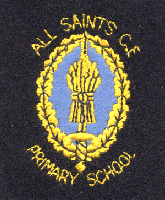|
Part One...cont The new school was described as a “commodious building”. It was a long narrow, two storey stone building with one large classroom downstairs and upstairs. At the side of the downstairs room was a ‘gallery”, a stepped tier of backless seats for the infants. This would allow the teacher to see what each child was doing. Also in this room was Standard 1, 50 this meant that the two groups were taught in the same room. The upstairs room, which was connected to the lower room by an inside staircase, housed Standards 11, 111, lV, V and Vl which meant that it was possible that five classes may have been operating in one room. There followed a period where the school increased its numbers which inevitably led to extra financial demands on the subscribers. Between 1851 and 1859, staff salaries only rose to £40 per year and this resulted in frequent changes in personnel which adversely affected the children’s education. Grants helped to lead to increases in stipend so that by 1865 the Master received £71.13s.5d. which was to include £5 for instructing pupil teachers. The financial problems of the school, frequent staff changes and the inexperience of the pupil teachers reduced the effectiveness of the school and this was noted in the Inspector’s Report of 1866. The Rev. Thomas Temple M.A. found “the boys deficient in respectfulness of manner”, “the girls showing a tendency to leave answering to a few at the top of the class, “poor spelling.” He advocated “a wider scope, for all teaching is elementary and “Boys should understand what they read.” In 1869 he found “notation and spelling were poor, writing and spelling and arithmetic in the Upper School was poor.” Times were very hard for many of the children attending the school at that time. However, happily some money was spared for treats and books though much of the teaching was by rote or from the blackboard,. Slates were in general use, pencils and paper were seldom seen. It is interesting to note that in 1886 there were 249 children in the Day school with 6 teachers and 346 children in the Sunday School with 54 teachers. The Vicar, Canon Adams, inaugurated the Special Services Day when the collections were devoted to the work of the school. This soon became the most generous offering of the year. During the 10 years 1877 - 1886, £528 was raised. Despite the generosity of groups and individuals, financial problems continued to restrict the development of the school and its children. Money had to be borrowed to improve the structure of the building but by 1897 the Managers were claiming a grant because the staff were unpaid and the equipment inadequate. In 1889 Peter Arkwright granted the Managers land next to the school to build a dwelling house for the Master to occupy rent free or to pay a yearly sum agreed by the Trustees. Frederick Arkwright gave £200 towards the cost of the house, Mr. And Mrs. Bradley £100. Another £100 came from Mrs. Stevenson’s bequest and the Vicar raised £300 by a sale of work. The school house was built and the boundary wall erected by day labour and was let to the Schoolmaster for £19 per annum. This house is now used as the Curate’s house. 1897 saw the Education Authorities demanding alterations to the school and a meeting of the parishioners in the Schoolroom decided not to enlarge the school at a cost of £600, but instead to build a new one for £2,000. The new school which is the one at present used, was completed in 1902 in time for the implementation of the new Education Act which brought all schools under the Local Authority. These newspaper extracts from the Stockport Advertiser give a good indication of the pride and expectation which was generated by the opening of the new building. |
|||||||||||||
